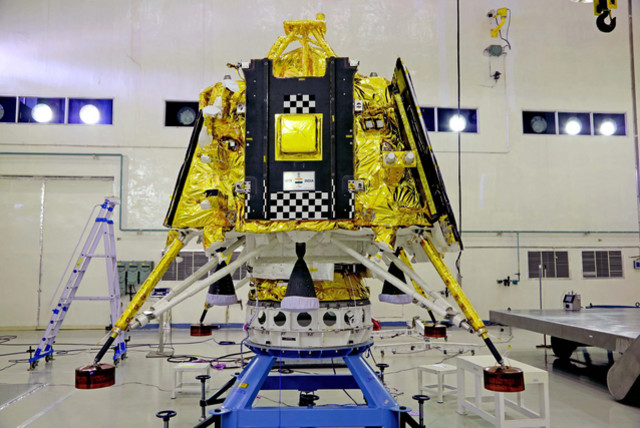India's Chandrayaan-3 lander detects 'moonquake' during two week mission

Electrical signals are generated when tremors cause springs within the machinery to move, allowing the scientists to construct models of what has occurred.
India's successful landing on the south pole of the moon has already borne fruit. One such discovery is the sensing, using the Chandrayaan-3 rover's instruments, of seismic activity beneath the lunar surface, a report by Yourstory has revealed.
The rover was outfitted with the revolutionary Instrument for Lunar Seismic Activity (ILSA), a tool for measuring tremors beneath the ground using the Micro Electro Mechanical Systems. The ILSA has a full six accelerometers, making it incredibly perceptive to minor movement.
Electrical signals are generated when tremors cause springs within the machinery to move, allowing the scientists to construct models of what has occurred.
The technology even picked up the movements of the Chandrayaan-3’s smaller sister vehicle, the Pragyan rover, as it went about its mission. The seismic activity recorded appears to be of natural origin.
Also aboard the rover is the Radio Anatomy of Moon Bound Hypersensitive Ionosphere and Atmosphere. Using this instrument the scientists at India’s space agency detected plasma particles at the lunar south pole.
Additionally, the Pragyan rover has discovered sulfur on the moon’s surface.
What are moonquakes?
Moonquakes, according to Firstpost are very similar to the better known earthquakes but tend to last slightly and be somewhat weaker. The existence of such seismic activity has been known for some time, having been detected by seismometers left on the moon by Apollo astronauts.
Jerusalem Post Store
`; document.getElementById("linkPremium").innerHTML = cont; var divWithLink = document.getElementById("premium-link"); if (divWithLink !== null && divWithLink !== 'undefined') { divWithLink.style.border = "solid 1px #cb0f3e"; divWithLink.style.textAlign = "center"; divWithLink.style.marginBottom = "15px"; divWithLink.style.marginTop = "15px"; divWithLink.style.width = "100%"; divWithLink.style.backgroundColor = "#122952"; divWithLink.style.color = "#ffffff"; divWithLink.style.lineHeight = "1.5"; } } (function (v, i) { });

